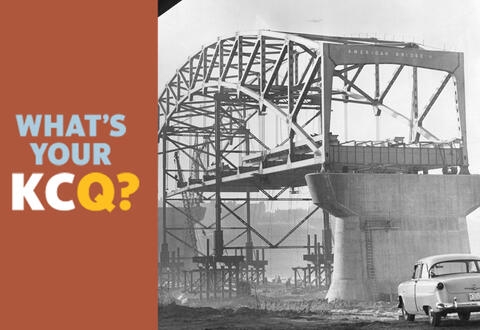From Labor Strikes to Demolition, Here's the Story of Kansas City's Buck O'Neil Bridge

What's Your KCQ? What do you want to know about our community? The Library and The Kansas City Star combine resources to find answers to questions about regional topics.
If you’re in or near downtown Kansas City on Tuesday, you might hear a loud boom as the final section of a KC landmark comes crumbling down.
The blast this week is the final one needed in the Missouri Department of Transportation’s demolition of the John Jordan “Buck” O’Neil Memorial Bridge, previously known as the Broadway Bridge. It began Feb. 15 with the first arch, followed by another blast April 2 for the middle arch.
A curious reader asked What’s Your KCQ?, a collaboration between The Kansas City Star and the Kansas City Public Library, to explain the history of the bridge.
As with a majority of modern Kansas City's infrastructure, the post-World War II automobile boom drove the decision to build a new bridge across the Missouri River at the time, motorists could choose between the Hannibal Bridge and the Armour-Swift-Burlington (ASB) Bridge, both of which served as hybrid railroad and automobile bridges. However, they became increasingly inadequate to manage the growing traffic demands over the years.
It was the Great Flood of 1951 that convinced city planners to expedite their plans. On July 13, four cargo-laden barges broke free from their moorings at Kaw Point and collided with the Hannibal Bridge’s piers. Although its structure was undamaged, planners recognized that losing one of the two crossings would be catastrophic for both the area's economy and commute times.
City Manager L.P. Cookingham outlined a plan for a modern automobile bridge designed by HNTB Corporation. A $13 million bond program financed the new span which would be repaid through tolls.
Read the rest of the story at KCHistory.org.